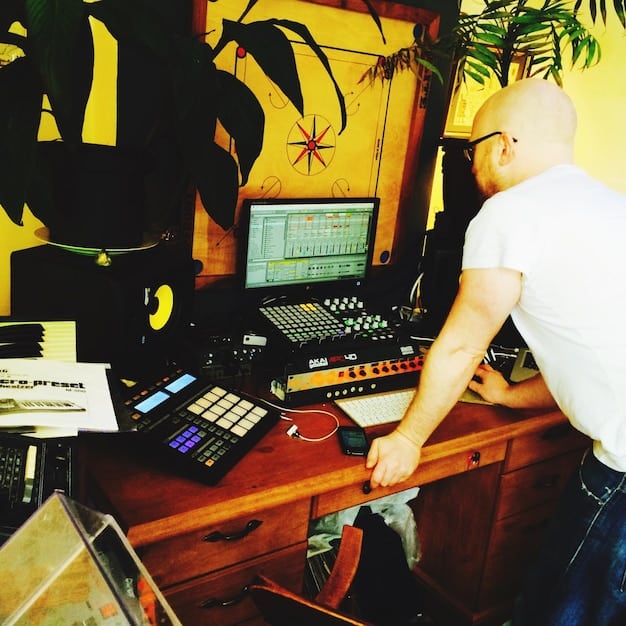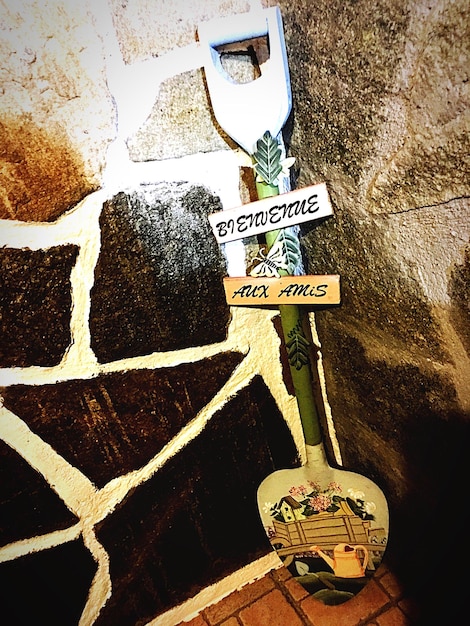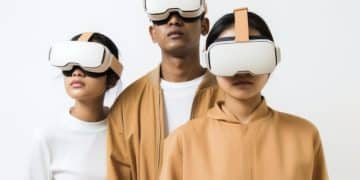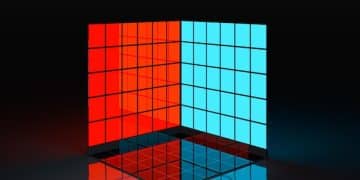The Art of the Remix: Sampling & Music’s Future in 2025

The Art of the Remix: How Sampling and Mashups are Redefining Music in 2025 explores the transformative impact of these techniques on contemporary music, examining their evolution, influence on popular culture, and potential future directions within the music industry.
Get ready to explore the dynamic world of music where the past collides with the future! The Art of the Remix: How Sampling and Mashups are Redefining Music in 2025 is changing soundscapes, pushing creative boundaries, and offering completely new listening experiences.
The Evolution of Sampling and Mashups
Sampling and mashups have a rich history, evolving from simple techniques into sophisticated art forms that redefine musical expression. In 2025, these practices are more prevalent and innovative than ever before.
Let’s delve into the historical roots of these transformative musical techniques and examine their impact on the music industry.
Early Days of Sampling
Sampling emerged in the late 20th century, enabled by technological advancements in recording and playback. Pioneering artists started experimenting with incorporating snippets of existing recordings into their music.
The Rise of Mashups
Mashups took this concept further by blending entire tracks, often from disparate genres, to create entirely new compositions. This era saw legal grey areas being explored as creativity pushed against copyright boundaries.
- Understanding the legal landscape surrounding sampling and mashups.
- Highlighting influential early samplers and mashup artists.
- Examining the impact on copyright law and fair use debates.
These initial innovations laid the groundwork for today’s vibrant remix culture, setting the stage for digital tools and online platforms to democratize music production and distribution.

Technological Advancements Fueling the Remix Revolution
Advancements in digital technology have been pivotal in the explosion of sampling and mashups. Inexpensive, powerful software and vast online libraries of sounds have made music production accessible to everyone.
The digital revolution has democratized music creation, leading to an explosion of creativity and innovation in the realm of remixes.
Accessibility of Digital Audio Workstations (DAWs)
Today’s DAWs are user-friendly and feature-rich, providing aspiring musicians with the tools they need to manipulate audio and create complex arrangements.
Vast Online Libraries of Sounds
Online platforms offer access to an almost limitless collection of samples, loops, and stems, drastically reducing the barrier to entry for remixers.
- Discussing specific software and hardware tools used in remixing.
- Analyzing the impact of AI and machine learning in music production.
- Addressing the ethical considerations of using AI-generated content.
With technology continuously evolving, the possibilities for innovation in remixing are virtually limitless.
The Art of the Remix: Creative Techniques and Styles
The art of the remix involves various creative techniques, from simple edits to complex transformations. In 2025, artists are pushing the boundaries of what’s possible with these methods.
Let’s explore some of the most popular and innovative techniques used by remixers, underscoring how they reimagine and reshape original material.
Re-interpretations
These remixes maintain the essence of the original while re-framing it in a new genre or style.
Deconstructions
Deconstructing a track involves stripping it down to its essential elements and reassembling it in a completely new way, challenging listeners’ expectations.

- Providing examples of successful remixes of different genres.
- Discussing the challenges faced by remixers in copyright infringement and fair use.
- Highlighting the importance of understanding the emotional and contextual elements of the song.
This evolution and experimentation continue to enhance the art of remixing, making it one of the most creative forces in contemporary music.
Mashups in 2025: Blending Genres and Eras
Mashups have evolved into a sophisticated art form, expertly blending genres and eras to create unexpected musical combinations. This trend is set to continue, with mashup artists experimenting with more diverse and obscure sources.
We’ll look at some prime examples of how mashups have transcended simple combinations, becoming genuine works of art blending diverse musical landscapes.
Genre Collisions
Mashup artists creating unexpected combinations, mixing, for example, classical music with hip-hop beats.
Nostalgia Blending
Combining retro tracks with modern sounds to appeal to both older and younger audiences.
Mashups are not just about combining songs; they’re about creating a musical dialogue between different styles and periods.
The Influence of Remixes and Mashups on Pop Culture
Remixes and mashups have had a significant impact on pop culture. They influence trends, inspire new musical directions, and shape how music is consumed and appreciated.
Consider, for example, how remixes can breathe new life into older tracks, helping them find new audiences and stay relevant in the fast-paced world of pop music.
Reviving Vintage Tracks
Remixes can introduce retro tracks to new audiences, allowing them to reenter pop culture conversations.
Shaping Modern Music Trends
Remix culture leads to new genres and styles as artists experiment with different combinations and soundscapes.
- The role of remixes in film soundtracks, advertising, and video games.
- Discussing how remixes and mashups have impacted dance culture.
- Analyzing the effect on user-generated content platforms.
The infusion of remix culture into mainstream society solidifies its role as a transformative force in the music industry.
The Future of Remix Culture in 2025 and Beyond
Looking ahead to 2025, remix culture is poised for continued growth and innovation, especially with advancements in AI and machine learning.
As we consider the prospects of remix culture, it’s essential to consider potential obstacles and opportunities that may shape the future of music.
AI-Assisted Remixing
AI algorithms that assist in identifying and merging audio samples, potentially creating remixes autonomously.
Virtual Reality Music Experiences
VR environments where listeners can interact with remixes in immersive ways, allowing for active engagement with the music.
- Identifying emerging trends in remixing.
- Evaluating the growing significance of remix culture in music education.
- Highlighting the importance of supporting remix artists and their creative works.
Remix culture continues to evolve and shape the music industry, promising an exciting future for artists and listeners alike.
| Key Point | Brief Description |
|---|---|
| 🎶 Evolution | Tracing the roots of sampling and mashups from their inception to modern techniques. |
| 💻 Tech Influence | Analyzing how DAWs and online resources democratize remixing. |
| 🎛️ Creative Art | Exploring the techniques and styles behind innovative remixes. |
| 🌐 Culture Impact | Highlighting the influence of remixes on trends and modern music. |
FAQ
Sampling involves using portions of existing recordings in a new song. This can range from a drum beat to a melodic phrase, adding depth and texture to the new composition.
Mashups blend entire songs together, often from different genres or eras, to create a harmonious yet unexpected combination. Remixes, however, focus on altering or reinterpreting one specific song.
Legality varies. Generally, clearing samples with copyright holders is necessary. Fair use allows limited, transformative use without permission, but it’s subject to legal interpretation.
Digital Audio Workstations (DAWs) like Ableton Live, Logic Pro X, and FL Studio are commonly used. These provide tools for audio manipulation, sequencing, and mixing.
AI helps in identifying samples, automating repetitive tasks, and even generating new musical elements. This accelerates the creative process while opening new avenues for innovation.
Conclusion
As we journey into 2025, the art of the remix continues to evolve, creating new avenues for musical expression and significantly influencing pop culture. With technological transformations and creative ingenuity, the potential for sampling and mashups remains limitless, promising to reshape the future of music.





